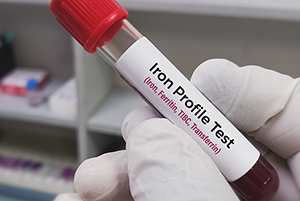



| By Dr. Ronald Hoffman

It’s a “Syndemic”: I love this term! It’s the formulation of Australian researchers at the University of New South Wales. In a new paper they assert:
“COVID-19 is creating a profound impact on all parts of the community, including the physical and mental health of the public. The growing pandemic is augmenting existing mental health problems, including loneliness, anxiety, paranoia, panic, depression, and hoarding, with long-term psychosocial impacts. Social distancing, stress, and fear are the main factors behind these psychological problems, leading to a global increase in suicides. Self-isolation and quarantine measures disproportionately affect people, especially older adults, migrants, laborers, refugees, people with chronic diseases, and marginalized and vulnerable populations. The COVID-19 cataclysm has become the most serious problem worldwide, and its consequences have left no one untouched.”
Additionally, the authors point out the susceptibility of the multitude of PLWNCDs—people living with non-communicable diseases. These NCDs include “co-morbidities” like hypertension, diabetes, cardiovascular disease, and chronic lung disease, especially chronic obstructive pulmonary disease.
The review highlights the fact that “86% of the COVID-19 patients in India and 72% of the COVID-19 patients in China had co-morbidities”.
The authors conclude that “. . . no matter how effective a treatment or protective a vaccine, the pursuit of a purely biomedical solution to COVID-19 will fail.”
COMMENT: These stark statistics underscore the need for a revolution in health care that addresses the vulnerabilities that not only make COVID-19 worse but continue to be responsible for an inordinate proportion of death and disability worldwide. The current “Syndemic” should be a wake-up call, prompting us to address resilience in the face of inevitable future challenges.
A cure for obesity? Surveys show that the majority of Americans are now considered overweight. And a shocking double-digit percentage are “morbidly obese”, carrying scores and even hundreds of extra pounds on their racks. Most people aren’t exercising adequately and consume excess calories. But some people can’t help it—whatever they do, they can’t seem to shed those extra pounds.
We’ve come to recognize that this is due, in part, to genetics. Some individuals are, to a greater or lesser degree, programmed for obesity. They may have a strong family history of overweight. Alternatively, they may possess, like many of Native American ancestry, certain “thrifty genes” designed to help people survive harsh conditions of famine by storing fat efficiently.
There may now be a breakthrough for those with a certain type of genetically-determined obesity. The target is the melanocortin gene, one of a myriad of genes that impact body and appetite.
In a Lancet study, Setmelanotide, an investigational melanocortin 4 receptor (MC4R) agonist, was associated with significant weight loss and hunger reduction in patients with rare genetic forms of early-onset obesity. 80% of individuals with the fat gene lost at least 10% of body weight at one year. Mean weight loss was -25.6%. And self-reported hunger was decreased by 27%.
COMMENT: Weight—like intelligence, personality, athletic aptitude, and other complex human traits—is associated with a multitude of genes. Then there are the effects of environment—epigenetics—that influence the expression of genetic potentialities.
The study in question is applicable only to a small minority of people with relatively uncommon variations in their melanocortin or leptin genes. But it may yield future treatment strategies for very overweight individuals.
Setmelanotide isn’t likely to be a panacea for the millions of Americans who might do well to shed those pesky 15-20 extra pounds. It’ll be expensive, and if you don’t have the culprit genes, it’s not likely to do much. And it’s not clear yet whether it might have untoward off-target effects, for example, on mood or libido.
As an aside, I’ve performed a comprehensive genetic analysis on myself, and I’m starting to do it on select patients. There are dozens of genes on that panel that contribute to the likelihood of overweight. I was shocked to discover that I possess quite a few of them. But I’m normal weight at 5’10” and 162 pounds.
Just as I prepared this column, I received an update to my 23andMe report which addresses weight. It says that, while I have 348 gene variants associated with weight gain susceptibility, I have 414 that resist fat accumulation. They predict that I’m likely to weigh 7% less than the average 68-year-old man who is 5’10—a portly 195 pounds.
True, I eat a quasi-Paleo diet and exercise a ton. And I was a chubby kid, until puberty kicked in. Do these genes make me look fat? I think I’ll jump on my new bike and burn off some calories just in case.
Anti-inflammatory diet vs. heart disease: We talked about it in a recent podcast with Dr. David Seaman, author of The DeFlame Diet. There are pro-inflammatory foods and anti-inflammatory foods; preserving organ function and staving off aging are dependent on achieving an optimal dietary inflammatory ratio.
In this large study in the Journal of the American College of Cardiology, researchers found that participants consuming pro-inflammatory diets had a 46% higher risk of heart disease and 28% higher risk of stroke, compared to those consuming anti-inflammatory diets. That’s huge, far beyond the capabilities of any known drug to confer protection!
They rated green leafy vegetables (kale, spinach, cabbage, arugula), yellow vegetables (pumpkin, yellow peppers, beans, carrots), whole grains, coffee, tea and wine and foods rich in fiber as anti-inflammatory; Foods considered major contributors to the pro-inflammatory dietary index included refined sugars and grains, fried foods, sodas, and processed, red and organ meat.
In a separate but related study, walnut consumers were monitored over a two-year period. It was found that “those who ate a diet with walnuts showed significantly reduced levels of inflammation in the body in 6 out of 10 of the inflammatory biomarkers tested.”
COMMENT: The JACC authors are on the right track, but I dispute their characterization of red and organ meat (ok, maybe processed meat) as being pro-inflammatory. After all, most studies find no correlation between red meat consumption and heart disease or overall death risk; one of the few that did, touted by many anti-meat activists, found only a puny 3-7% increase in risk.
Besides, our Paleo ancestors, and certain modern hunter-gatherer holdouts, consume even more game protein than Western subjects, yet enjoy a virtual absence of heart disease. The much-vaunted connection between arachidonic acid in meat and inflammation has been mostly debunked. It may be that the higher percentage of omega-3 found in grass-fed animal products (as opposed to conventional grain-fed livestock) protects against inflammation.
Additionally, the alleged pro-inflammatory “acid-load” imparted by meat can easily be mitigated by portion control and avoidance of sugar, soda, and processed carbohydrates.
So, yes to an anti-inflammatory diet. And while you’re at it, throw some crushed walnuts on your arugula salad as I do routinely.
Though we think of declining estrogen as the hallmark of menopause, it's actually common for…

Up to 12 percent of Americans have ulcers at some point in life. Peptic ulcers…
Gallbladder disease is a modern illness. An estimated 20 million Americans have gallbladder disease. The…

I just returned from a dive trip to Turks and Caicos and wanted to share…

Q: According to my latest bloodwork, I have low levels of ferritin. Can you shed…

Dr. Antonio Bianco, recipient of the American Thyroid Association’s John B. Stanbury Thyroid Pathophysiology Medal,…

ENCORE: Q&A with Leyla, Part 1: Selfies and Plastic Surgery

Our virtual voicemail is open 24/7, so there's no need to wait to submit your questions for Dr. Hoffman. Leave a message, and you may hear your question featured on the Intelligent Medicine radio program!